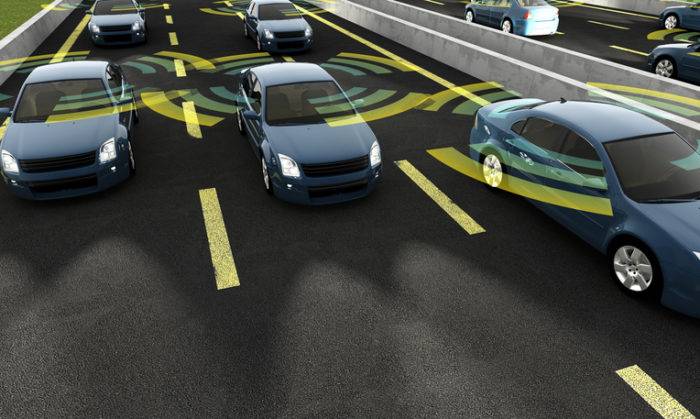By 2040, we think fifth-level, autonomy-enabled mobility will be available as a service for the majority of the transportation needs of urban consumers. In other words, 70% of the urban population wouldn’t need to own cars because they would be available on-demand through their favorite app.
Although several power players like General Motors and Ford are promising fully autonomous cars sooner, there are many technological and large-scale regulatory and consumer sentiment issues with autonomous cars that would need to be addressed before they could fulfill our transportation needs.
See also: Report predicts 95% of cars will be autonomous by 2030
But imagine the world in 2040, when most of the population doesn’t need cars. Everything from shopping to commuting to long distance road trips will be addressed by fully autonomous vehicles that you can summon with the push of a button.
Rethinking today’s products and services in the 2040 world
Once you accept that basic premise, it is surprising to see how so many of our current products and services do not fit well with the world of the fully autonomous car. When we shift from complete ownership to an on-demand leasing model, automotive OEMs and their supply chains (Tier 1 and Tier 2) will be the first ones affected. Several of them are thinking of strategies to grapple with this eventual reality, but this is just the tip of the iceberg. A significant number of multibillion dollar companies operate around consumers owning at least one to two cars per family. All these products and services will either become obsolete or have to be fundamentally rethought.
15 minutes for an insurance product we don’t need?
Let us start with the way we buy cars — at dealerships. Once consumers stop buying cars, there is no need for dealership networks. They are merely a distribution channel that will be replaced by an app that we use to hail our cars.
Then, there’s insurance; we get insurance as soon as we buy a car. Because we will no longer own cars, there is no need to spend 15 minutes to save on car insurance. Accidents because of systemic failures like poor connectivity or algorithmic edge cases are inevitable, but the massive reduction in the frequency of accidents coupled with insurance being bundled into the mobility service will result in an enormous reduction in revenue for the insurance industry.
Car loans, which finance our car ownership, will also be out. In the 2040 world, mobility service providers will end up owning most of the cars. Even if you assume one or two ride hailing apps will dominate the market, there are economies of scale in owning and operating large autonomous car networks. As a result, we believe the ultimate owner of the cars will be large businesses, not individual car owners who would lease their cars on ride sharing platforms. These large fleet owners would have a low cost of capital with which to finance their vehicle purchases. Through both a massive reduction in the number of cars and the APR they can charge for each car loan, auto loan providers will see a huge downsizing of their market.
First stop on the road to oblivion: gas stations
Once we buy our cars, we spend a lot of money on it. Let us think about these products and their relevance in the 2040 world.
The first and most obvious car-related expense is gas. In a world where we have autonomous car fleets operating, we don’t need as many gas stations. A few large gas stations far away from high-density areas and perhaps operated, once again, by large fleet owners should suffice. These cars would essentially act like public transportation vehicles, which are refueled at the end of each day at a central location. A fewer number of miles traveled because we will be using ride sharing services, with more fuel efficient cars will certainly be a cause for concern for oil companies.
Parking is another common expense with a poor consumer experience. The omnipotence of autonomous ride-sharing cars will lead us to have fewer parking lots away from high-density areas where mobility service providers can park their automotive fleets when demand is low. Close to half of our urban areas are dedicated to parking, and therefore, a massive reduction in parking lots will be a boon to our cities.
Every big technological change has massive unforeseeable consequences
At conception, the Internet was a platform only for email. But its unintended consequences ended up creating companies like Amazon, Google, and Facebook, which have changed the way we buy and consume media. In the same vein, we believe autonomous mobility will fundamentally change the way we live in our cities. So much of our urban real estate is tied to car ownership model of today: parking lots, gas stations, dealerships.
No one can foresee the new products or services that could emerge from such surplus real estate becoming available or the effects it will have on our housing markets. Will people live much farther from cities because commuting in an autonomous car could be productive, or would urban housing become cheaper because we don’t need parking lots anymore?
And as for my personal favorite unintended consequence, short distance flights — would we rather take a flight from San Francisco to Los Angeles or would we prefer to get there in swankier-than-business-class autonomous vehicles that come with plush beds and Netflix? I am extremely confident that there are many more positive, albeit unintended, consequences of autonomous cars that will emerge en-route to 2040.
So why is this scary?
The 2040 world of autonomous mobility is scary because so many of today’s products and services would have to radically evolve to stay relevant. And it is not just the automotive OEMs that are in trouble — auto insurance companies, car loan providers, oil and gas companies, car dealerships, parking lot owners, and auto parts suppliers and stores are all on the chopping block. Just this foreseeable disruption alone is worth $2 trillion in terms of products and services we consume today. If these companies are affected, it will set off a chain reaction of problems for suppliers, which will trigger panic.
See also: Will elderly and disabled gain most from driverless cars?
This $2 trillion will be reshuffled and distributed to consumers, new companies and incumbents. And that is scary. Some of the best incumbent players in all the industries highlighted above are already thinking ahead to prepare and adapt to new reality. But many others will likely not survive this disruption. That’s scary, too.
Preparing for the 2040 future now by partnering with startups and augmenting your organization with change makers that can imagine the future well before it has arrived is essential if incumbent companies want to survive in this changing landscape. But for the startup founders and venture capitalists involved in the industry, the evolution of autonomous cars is an enormous and exciting opportunity that has the potential to create multiple $1 billion technology companies. Uber and Lyft are just the beginning.
The author is a rogue scientist turned venture capitalist focusing on investments in Data, Automation Artificial Intelligence (A.I.), and frontier technologies at Draper Nexus. He co-led the investment in Nauto, an A.I. enabled dashboard camera that provides driver safety and road scene analytics to automotive OEMs, commercial fleets, and insurance companies. Through learnings from this investment, he has further built out the firm’s investment thesis in autonomous mobility.


















